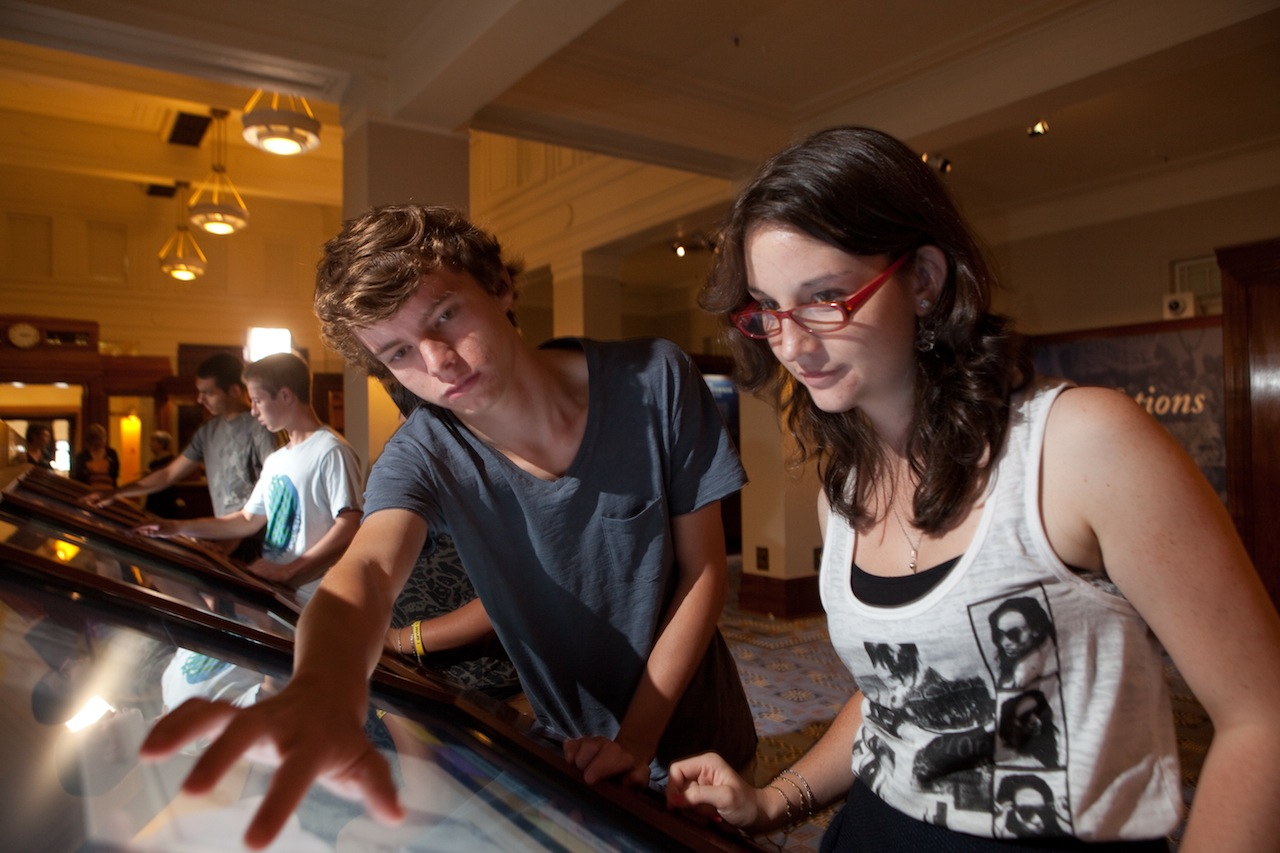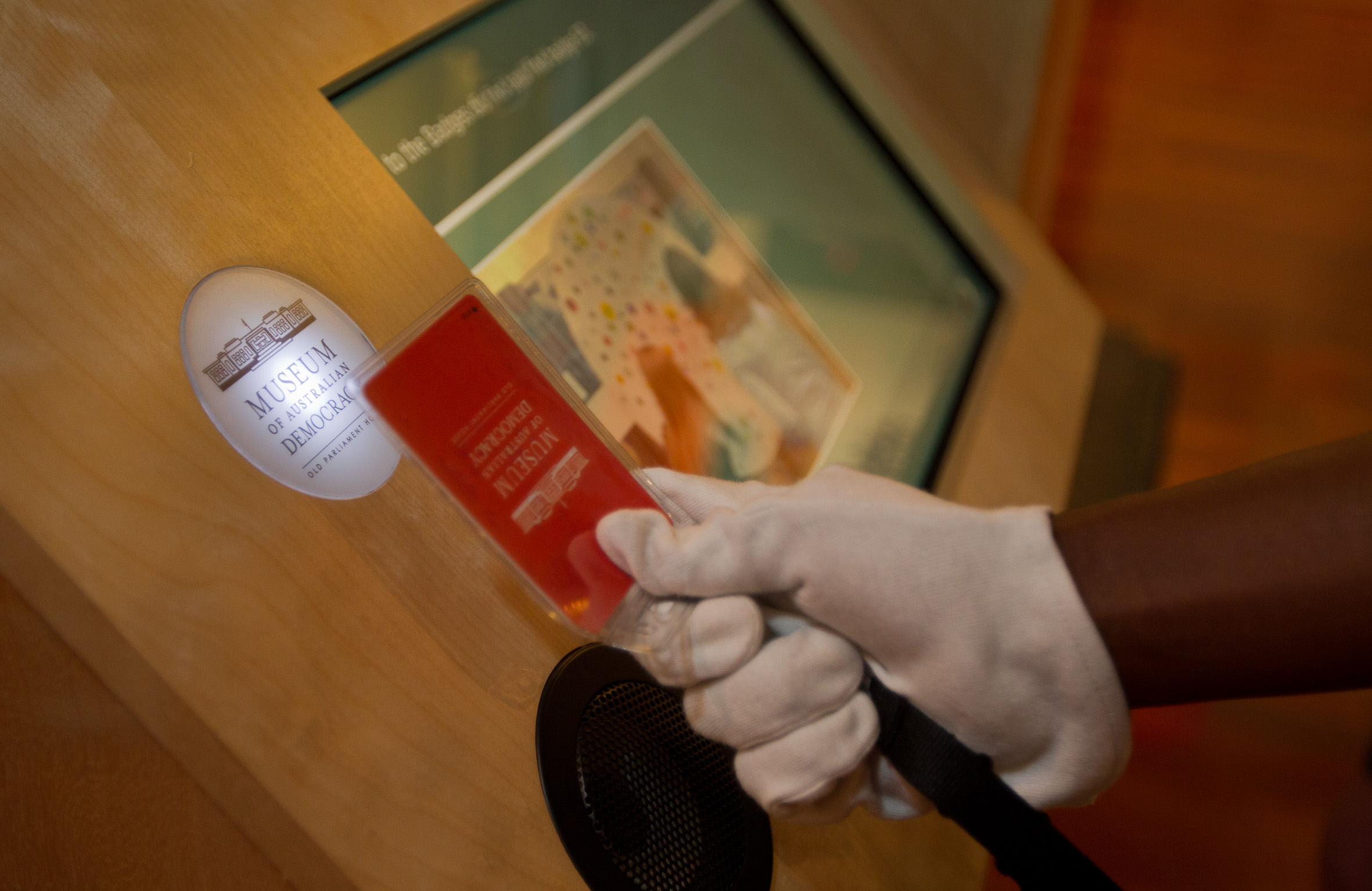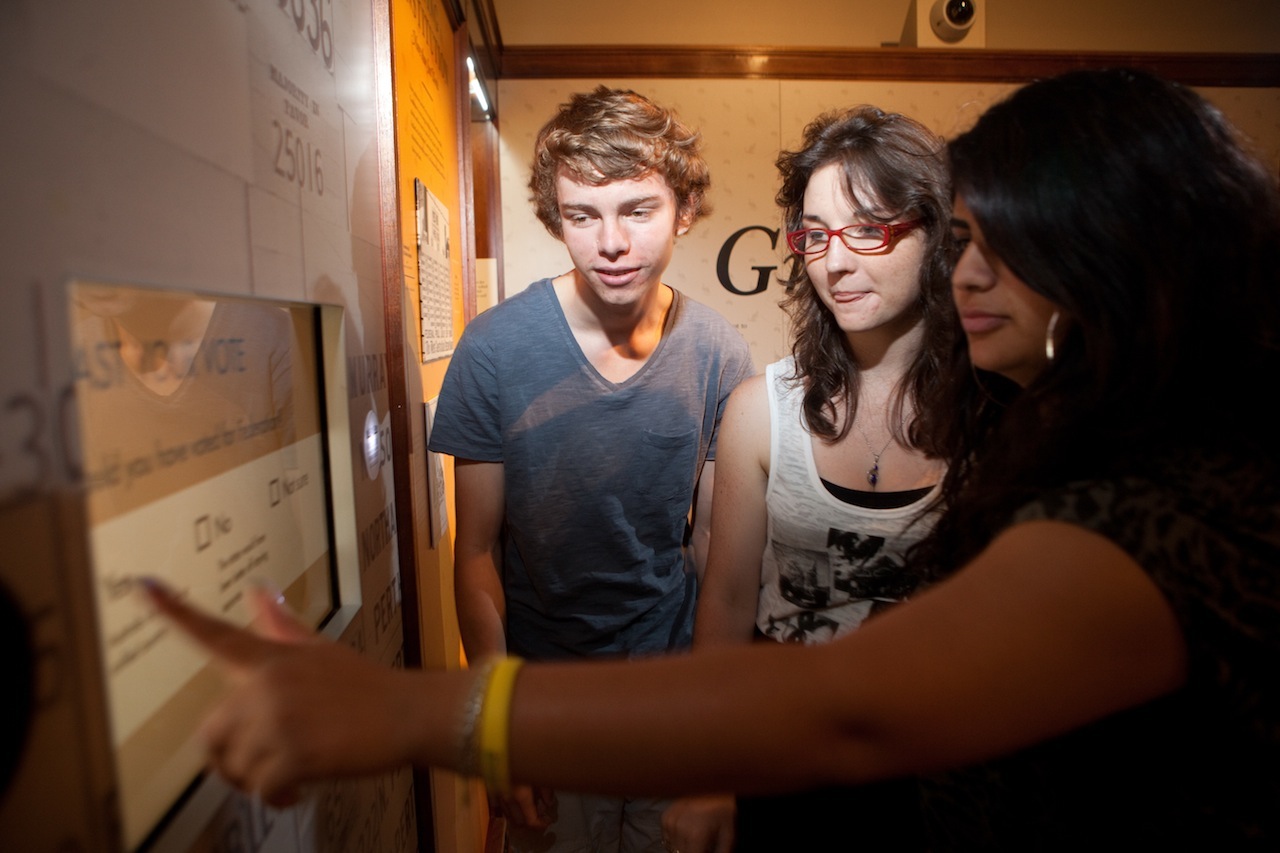The Museum of Australian Democracy School Program brings 300 students through every day. That's 75,000 per year! How does one keep that many kids organized—let alone interested—in a history museum?
Breaking it down
Keeping such a massive number of kids focused, organized and moving through the exhibition presented a complex challenge. We began development on an interactive learning trail that broke school groups into small ‘teams’. These smaller teams could navigate independently and asynchronously throughout the exhibition. This movement would be the key to the program in terms of circulation logistics.

A new approach to an old idea
Unlike the traditional worksheet based approach to the traditional ‘scavenger hunt’, the teams would use RFID cards to explore unique trails amongst the museum’s 50+ computers. At each stop, simple activities like matching games, ‘go and sees’ and opinion polls inspire the students to engage with the museums material culture. In one activity, for example, students are asked to observe a nearby writing set and associated graphic panels. Upon returning to the screen (and swiping their RFID card), they are then asked a question about the writing set. If they observed carefully, they will know the answer.
In this way, technology is used both behind the scenes as a navigation tool that successfully eliminates conflict or bottlenecks, and in the foreground as a jumping off point for interaction with ‘real’ life rather than an overly engrossing, single station computer experience.


This successful interactive learning trail has since become the basis of our flagship product: Trail.
If you would like to know more about it, please contact us for more information.